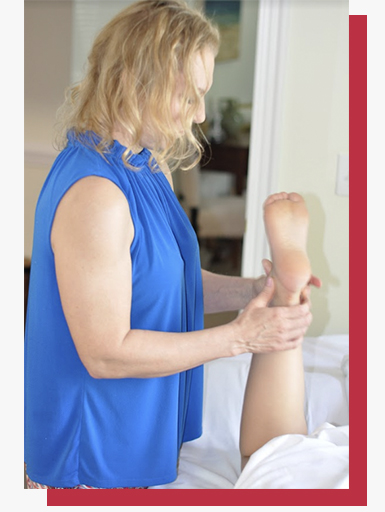The Trager approach, which is also called Trager or psychophysical integration therapy, is an approach to bodywork that endeavors to address both psychological and physical pain.

What is The Trager Approach
Developed by Milton Trager, MD, the Trager Approach uses a combination of supported movement and guided physical exercises. Trager originally used his technique with patients recovering from polio and later expanded the technique to help people with Parkinson’s, multiple sclerosis, and other physiological conditions. Practitioners now use Trager work for a wide range of conditions, including chronic pain.
The approach focuses on getting the most efficient use of our neuromuscular system. Through the use of gentle movement, it explores how we use our bodies. It gives us a chance to see what causes pain, discomfort or limitations in movement. Based on the idea that the nervous system controls our muscular responses, the approach maintains that all work or movements be made without pain. Pain activates the nervous system, thus causing tightening of muscles that can result in possible pain and the restriction of movement. This is especially true with chronic pain.
What Is a Trager Session Like?
During a Trager session, which can be given either clothed or under draping, clients are encouraged to share with their therapist any time that a movement or technique causes discomfort. When this occurs, the therapist and client work together to find ways to treat the area in a pain-free manner; thus the client is involved directly in their own therapy. Sessions include table work and self-care movement activities that the client can use outside of the session to help support their therapy. Clients are also encouraged to explore thought processes and attitudes that may also affect the neuromuscular system.
The Benefits of Trager Therapy
Practitioners view their work as a form of rehabilitation that has the potential to help correct movement patterns that may become harmful, thus helping clients achieve long-lasting good health. The effects are cumulative, so people who experience benefit from the Trager approach should experience continued improvements over time. Because clients can practice movements on their own at home, this approach to massage allows individuals to build upon the progress they make in therapy sessions.
Some research suggests Trager therapy can improve health, particularly in people with movement disorders. For example, a 2002 study found that Trager work could reduce muscle rigidity in people with Parkinson’s. The study explored the use of gentle rocking motions for 20 minutes on 30 patients, who had an overall reduction in muscle rigidity of 36% immediately after treatment.
